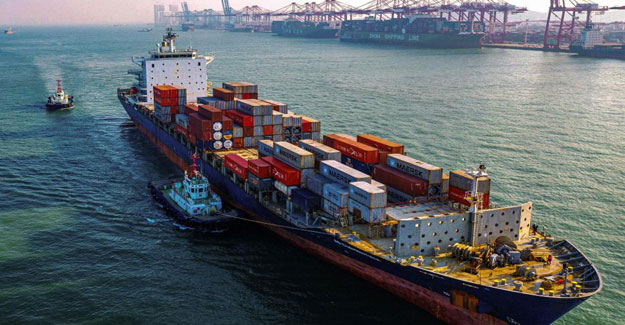
US Imports Impacted By Covid-19
The coronavirus outbreak is expected to have a longer and larger impact on imports at major US retail container ports than previously believed as factory shutdowns and travel restrictions in China continue to affect production, according to the Global Port Tracker report released by the National Retail Federation and Hackett Associates. "There are still a lot of unknowns to fully determine the impact of the coronavirus on the supply chain," NRF Vice President for Supply Chain and Customs Policy Jonathan Gold said. "As factories in China continue to come back online, products are now flowing again. But there are still issues affecting cargo movement, including the availability of truck drivers to move cargo to Chinese ports. Retailers are working with both their suppliers and transportation providers to find paths forward to minimize disruption." "Now that we are in the coronavirus environment, uncertainty has expanded exponentially," Hackett Associates Founder Ben Hackett said. "Our projections are based on the optimistic view that by the end of March or early April some sort of normalcy will have returned to trade." This month's report comes as a separate NRF survey of members found 40% of respondents said they are seeing disruptions to their supply chains from the virus and that another 26% expect to see disruptions as the situation continues. US ports covered by Global Port Tracker handled 1.82 million Twenty-Foot Equivalent Units in January, the latest month for which after-the-fact numbers are available. That was up 5.7% from December but down 3.8% from unusually high numbers a year ago related to US tariffs on goods from China. A TEU is one 20-foot-long cargo container or its equivalent. February was estimated at 1.42 million TEU, slightly above the 1.41 million TEU expected a month ago but down 12.6% from last year and significantly lower than the 1.54 million TEU forecast before the coronavirus began to have an effect on imports. March is forecast at 1.32 million TEU, down 18.3% from last year and less than the 1.46 million TEU expected last month or the 1.7 million TEU forecast before the virus. April, which had not previously been expected to be affected, is now forecast at 1.68 million TEU, down 3.5% from last year and lower than the 1.82 million TEU forecast last month. While the coronavirus makes forecasting difficult, the report calls for imports to jump to 2.02 million TEU in May, a 9.3% increase year-over-year, on the assumption that Chinese factories will have resumed most production by then and will be trying to make up for lower volume earlier. June is forecast at 1.97 million TEU, up 9.6% year-over-year, and July is forecast at 2.03 million TEU, up 3.3% year-over-year. Imports during 2019 totaled 21.6 million TEU, a 0.8% decrease from 2018 amid the ongoing trade war but still the second-highest year on record. The first half of 2020 is forecast to total 10.23 million TEU, down 2.8% from the same period last year and below the 10.47 million TEU forecast a month ago.
Textile Excellence
If you wish to Subscribe to Textile Excellence Print Edition, kindly fill in the below form and we shall get back to you with details.








